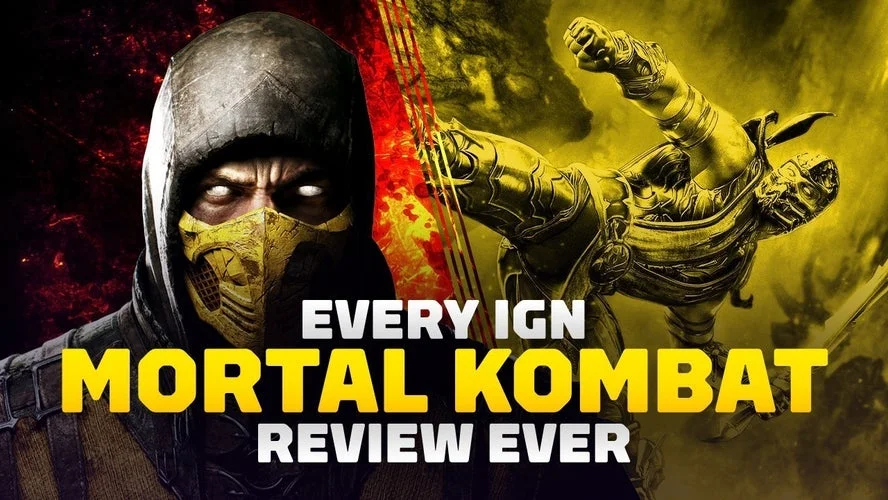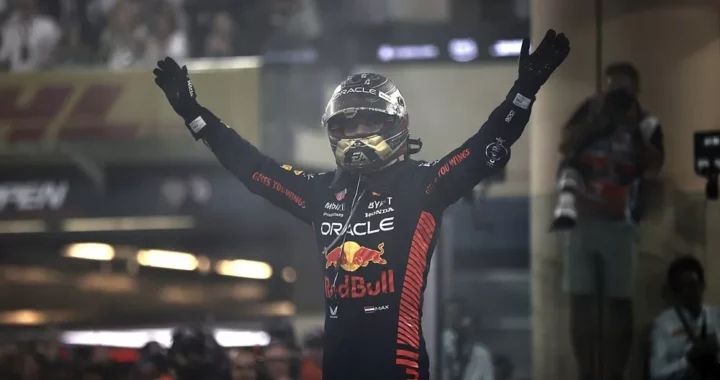“Mortal Kombat 1” Game Review
Mortal Kombat 1’s Game-Changing Gameplay Shift
If we were to carve a Mount Rushmore for fighting games, you’d definitely find the faces of Scorpion, Sub-Zero, or Liu Kang etched into that rock. For over three decades, Mortal Kombat has been synonymous with spine-ripping and head-severing action. The latest installment, Mortal Kombat 1, marks a significant shift in gameplay for the series. With the introduction of the new Kameo system, it takes player expression to unprecedented heights, allowing you to bend and break the traditional rules of the game by giving characters tools they weren’t originally designed to have. This results in a refreshingly dynamic fighting system that opens the door to some truly outrageous combos and setups. While some aspects of the game could use a bit more polish and refinement, Mortal Kombat 1 unquestionably lives up to its gory legacy.
One of the commendable things about Netherrealm in recent years is how each new Mortal Kombat game has managed to play dramatically different from its predecessor while preserving that unmistakable Mortal Kombat essence. So, it comes as no surprise that Mortal Kombat 1 introduces some substantial changes from MK11 that set it apart.
First off, it streamlines meter management to a single meter governing enhanced special moves, breakers, and now jump cancels out of uppercuts. Fatal blows remain a part of the game but no longer enjoy invincibility at the start. Krushing blows have been entirely removed, character variations are a thing of the past, and wake-up attacks and rolls have also been eliminated. Every character can now inflict significantly more damage without even spending meter, thanks to the new air combo system. Plus, blocked crouching jabs are finally punishable with crouching jabs of your own, reducing their spammability. These changes inject a breath of fresh air into MK1 while addressing some of the issues that the fighting game community had developed with MK11.
However, the most significant addition is undoubtedly the Kameo system. For the first time in a Mortal Kombat game, you get to select a second character who can assist you during fights. Your Kameo has its own meter, and every time you call them into the action, you consume half of it (or in some cases, like Goro’s devastating unblockable stomp assist, the whole thing). What’s even better is that each Kameo offers at least three different assist moves, effectively enhancing the toolkit of any character you choose to play. This adds a whole new layer of strategy and excitement to the Mortal Kombat experience.
Every fighter in Kameo brings a whole arsenal of new tricks to the table, and that’s what makes Mortal Kombat 1’s gameplay so exciting.
Let me break it down for you in a way that feels like we’re chatting over a game of MK1.
Picture this: I’m in the heat of battle, taking on the role of Baraka. Now, Baraka is a beast, but he’s got a little weakness – he doesn’t have any overhead or low-hitting moves in the middle of his combos. So, if you’re facing off against me, you could pretty much just crouch block and feel relatively safe. But hold on, there’s a twist. I can bring in Scorpion as my Kameo character, and suddenly, I’ve got a brand-new weapon in my arsenal – Scorpion’s overhead move. Now, I’ve got a sneaky way to open up my opponent that I didn’t have before. It’s like adding a secret ingredient to my offense recipe.
Or, let’s say I opt for Frost as my Kameo partner. She comes with a nifty low-hitting freeze attack. When things are getting wild in the heat of battle, I can catch my opponent off guard with Frost’s freezing move and set them up for a devastating combo. It’s all about surprising your opponent and keeping them on their toes.
But Kameo characters aren’t just about mixing up your attacks. They can also be your ticket to extending combos that usually hit a dead end. Imagine turning those small hits into respectable damage. That’s the kind of game-changer Kameos bring to the table. Some Kameos are like Swiss Army knives – they offer specialized skills. You could give your character a teleport, make them immune to projectiles, or give them a quick escape plan to create some distance. It’s all about customizing your gameplay to suit your style.
Now, I’ll be honest here. I’m not usually the biggest fan of assists in fighting games, especially when they involve complex tag systems. I prefer the purity of a one-on-one battle. But let me tell you, the way Mortal Kombat 1 handles Kameos is pure genius. It seamlessly integrates these assist moves into the game without overshadowing the core experience. It’s like adding a pinch of spice to your favorite dish – it enhances the flavor without overpowering it.
That being said, Mortal Kombat has always had a distinctive gameplay style. It’s got that classic dial-a-combo system, the whole “hold a button to block” thing, and a touch of stiffness in the movement. If you’ve been exploring other fighting games, you might find it a bit challenging to come back to MK1. Trust me, I’ve been there. It took me some time to reacquaint myself with MK1’s unique 2D fighting style. But once I did, oh boy, it was clear as day that Mortal Kombat 1’s combat is as solid and satisfying as ever. It’s like revisiting an old favorite – the nostalgia is strong, and the gameplay is still top-notch.
So, in a nutshell, Kameo characters are the game-changers you never knew you needed in Mortal Kombat 1. They add depth, strategy, and a dash of excitement to the already fantastic gameplay. Sure, it might take a bit to get used to, but once you’re in the groove, there’s no turning back. Mortal Kombat 1’s combat remains a timeless classic that’s as fierce as ever.
Mortal Kombat’s Fresh Start
The latest installment in the Mortal Kombat series marks a true turning point for the franchise, and it’s an incredibly satisfying one at that. This isn’t simply a reset of the timeline à la Mortal Kombat 9; it’s a complete overhaul of the entire Mortal Kombat lore. Familiar characters now sport entirely new appearances, backgrounds, relationships, and abilities. It all picks up eons after the events of Mortal Kombat 11, where the newly crowned Fire God Liu Kang wielded the Hourglass of Time to reshape the universe according to his vision.
In this new reality, Earthrealm enjoys a rare period of peace, Outworld is governed justly under the rule of Queen Sindel, and the Mortal Kombat tournament between realms still exists but has transformed into a showcase of pride and honor rather than a weapon for realm invasion. However, this tranquility is soon disrupted by external threats that, for now, we won’t delve into. Suffice it to say, after some delightfully relaxed and lighthearted opening chapters featuring the ever-supportive dad, Fire God Liu Kang, cheering on his spirited new champions during their inaugural martial arts tournament, things take a sharp turn for the intense, with stakes raised in the usual dramatic fashion.

One of the most exciting aspects of “Mortal Kombat 1” for me was the fresh take on classic kombatants. It was a real treat to see characters who had often been relegated to minor roles, like Baraka and Reptile, step into the spotlight.
In previous games, they were usually just henchmen, but in Mortal Kombat 1, they became major players with their own chapters and defining story moments. The writing was filled with clever in-universe references that felt like a nod to long-time fans like myself.
Netherrealm has always excelled at delivering story modes that are essentially the video game equivalent of over-the-top popcorn movies, and Mortal Kombat 1 is no exception. While the campaign doesn’t introduce any groundbreaking gameplay innovations, its six hours are a rollercoaster ride of action, brilliantly acted, and delightfully absurd in all the right ways. This might sound familiar because I said nearly the same thing three years ago in my review of Mortal Kombat 11’s single-player story mode. And if I had reviewed Mortal Kombat X, Injustice 2, Injustice 1, Mortal Kombat 9, or Mortal Kombat vs DC Universe, I could’ve said the same for those as well. It seems like Netherrealm’s designers adhere to the philosophy of “if it ain’t broke, don’t fix it.” So, if you enjoyed those titles as much as I did, you’ll likely find Mortal Kombat 1 equally satisfying.
While I wouldn’t say that anything needs a complete overhaul, there’s certainly room for refinement that hasn’t been fully explored. Each chapter thrusts you into the shoes of a new character without providing any guidance on what makes them unique. Things like their combo strings, launchers, or special moves are left for you to figure out on your own. I found myself learning as I went along, bringing up the move list and experimenting with strings and special moves. By the time I had achieved a basic level of competency with a character, the chapter had concluded, and I was onto the next one. This mode could benefit greatly from optional, brief developer-led character guides that help you grasp the fundamentals before diving into a 30-minute chapter, especially when the game’s tutorials are excellent outside of the story mode.
Beyond the cinematic story mode, Mortal Kombat 1 introduces a significant new single-player mode called Invasions. It’s a blend of various ideas, drawing inspiration from The Krypt’s themed environments, incorporating some light RPG elements from older Konquest modes, and featuring the quick, back-to-back, gimmicky battles reminiscent of the Towers of Time. All of these elements are packaged within a virtual game board. On paper, this mishmash of concepts sounds promising, but unfortunately, it tries to be a little too many things all at once.
Let’s break down how Invasion mode operates:
Picture this, every invasion “board” is like a virtual battlefield, composed of different spaces, each with its own unique combat scenario. You might find yourself facing off against Reptile in a place whimsically named “Look to La Luna,” or going head-to-head with a super-powered Kung Lao on a space amusingly titled “Kung Wow.” Your mission? To navigate this board, engaging in an unending series of battles against foes who don’t exactly put up a fierce fight. Along the way, you’ll collect rewards at a pace slower than a sloth’s stroll, hunt for keys to unlock gates, and tackle challenges like “Test Your Might” or survival minigames until you reach the grand finale.
During your journey, you might stumble upon themed towers that require you to conquer a series of battles, with a single loss sending you tumbling back to square one. Alternatively, you might be ambushed between spaces, facing a formidable opponent armed with unique modifiers. However, even these adversaries often turn out to be mere pushovers. In fact, for the majority of encounters, I found myself slipping into autopilot mode with Li Mei, relying on the same combo moves that I’d typically use against more formidable foes, regardless of who I was facing or what special modifiers were in play. The only times I truly had to think strategically were during the chapter-ending boss battles, where one of the combatants was dramatically powered up in a unique way.
Now, don’t get me wrong, Invasion mode is packed with underlying complexities. Each character and Kameo has a specific damage type, and there’s an intricate type advantage/disadvantage chart to consider. You’ll also encounter talismans that can be upgraded to provide various status bonuses, as well as relics that often come with both positive and negative effects you’ll need to weigh carefully. However, all these intricacies don’t really enhance the core gameplay experience. As the late-game boards ramp up the difficulty and force you to delve deeper into the RPG mechanics, it becomes apparent that Mortal Kombat 1 shines brightest when it keeps things simple, without the need for gimmicks.
I’m all for the occasional lighthearted match with wild modifiers and thematic challenges. However, Invasions piles up these fights one after the other and expects you to slog through them all just to unlock some of the best cosmetic options for its characters. It starts to feel more like a chore than an enjoyable gaming experience.
Mortal Kombat 1: Embracing the Essence of Pure Combat
When it comes to Mortal Kombat 1, the magic lies in its simplicity. No gimmicks, no frills—just pure, unadulterated combat. While it may not boast all the flashy bells and whistles of its successors, there’s an inherent beauty in the game’s straightforward approach.
One of the standout features of MK1 is the way it rewards your dedication to a specific character. As you invest more time and effort into mastering a character, you’ll gradually unlock a treasure trove of goodies tailored to that fighter. It’s a gratifying journey, with each level-up bringing you new gear, skins, taunts, brutalities, and even fatalities. Sure, you might be tempted to peek at online guides for those locked fatalities, but the thrill of discovering them in-game is something special. It’s a testament to MK1’s commitment to rewarding players for their dedication.
However, what sets Mortal Kombat 1 apart from the crowd, even in today’s gaming landscape, is its exceptional tutorial. Building upon the foundation laid by Mortal Kombat 11, the tutorial in MK1 is a masterclass in teaching the ropes. It doesn’t just cover the basics; it delves deep into the intricacies of the game, explaining system mechanics in a way that anyone can understand. From teaching you the fundamental controls to providing invaluable tips on pressuring your opponent, handling knockdowns, executing frame traps, and understanding terms like “jailing,” it leaves no stone unturned.
In fact, this tutorial is a shining example of what every fighting game should offer. It’s not just a guide; it’s an educational journey that every fan of the genre should embark on. Of course, it would be great to see the same level of commitment applied to character-specific tutorials, but we’re not left entirely high and dry. MK1 offers seven combo trials for each character, which is a nice touch for those who want to truly master their chosen fighter.
In a world where complexity often takes center stage, Mortal Kombat 1 reminds us of the beauty of simplicity. It’s a game that rewards dedication and provides a tutorial that sets the standard for the genre. So, if you haven’t already, dive into the world of MK1, embrace the essence of pure combat, and let your favorite character’s progression be your guiding light through the realms of Mortal Kombat.
When it comes to the online experience in Mortal Kombat 11, it’s a bit of a mixed bag.
There are aspects that remain unchanged from the previous installment, which has both its advantages and disadvantages. Let’s dive into what’s stayed the same and what’s evolved.
First off, the netcode is still in good shape. For those who’ve enjoyed the smooth online battles in Mortal Kombat 11, you’ll be pleased to know that this aspect hasn’t seen any drastic alterations. The classic King of the Hill mode is also making a return, offering that enjoyable competitive edge that fans have come to appreciate. And of course, Kombat League is back as well, offering seasonal rewards for those who climb the ranks. These rewards include various in-game goodies like currencies, skins, gear, profile pictures, and more. It’s a ranking system that generally does a decent job of matching you with opponents of similar skill levels, and it rewards your dedication with meaningful prizes that go beyond mere cosmetic enhancements.
However, there are some lingering frustrations that haven’t been addressed. One glaring issue is the inability to search for matches while engaged in another mode. Surprisingly, Mortal Kombat is one of the few major modern fighting game franchises that still doesn’t offer this convenience. Additionally, there’s a lack of options when it comes to creating custom rooms for multiple matches to run concurrently. If you happen to join a match already in progress, you’re left twiddling your thumbs as you stare at a blank screen until the ongoing battle concludes. These limitations were somewhat forgivable in 2019, but the gaming landscape has evolved, and Netherrealm Studios seems to be falling behind the competition in this regard. While crossplay is on the horizon, it’s disappointing that it’s not available right from the get-go.
One aspect of Mortal Kombat 11 that continues to shine is its visual prowess. The character models were already impressive, but they’ve been taken up a notch, moving closer to photorealism without falling into the eerie uncanny valley. However, the true stars of the show are the stages. Netherrealm’s environmental design team has truly outdone themselves, crafting some of the most stunning landscapes and grotesque dungeons the fighting game genre has ever witnessed. And let’s not forget about the fatalities – they’re even more gruesome and jaw-dropping this time around.
In conclusion, Mortal Kombat 11’s online experience offers a mix of familiar strengths and lingering frustrations. While it maintains its reputation for smooth online play, the lack of certain modern conveniences and the slow implementation of crossplay leave room for improvement. Nevertheless, the game’s stunning visuals and brutal finishing moves continue to impress, making it a noteworthy addition to the Mortal Kombat franchise.
Verdict: Mortal Kombat 1 – A Glimpse into a New Era
Mortal Kombat 1 has arrived, and it’s yet another remarkable addition to the iconic series. However, like any gem, it comes with a few flaws. The introduction of the Kameo system is a highlight, offering a fresh and exciting dimension to the game. Moreover, the developers have made some clever adjustments to the fighting mechanics, effectively tackling the long-standing issues that plagued Mortal Kombat 11 throughout its lifespan. Of course, there’s the expected stellar single-player story mode that continues to set the standard for the genre.
But as we dive deeper, we can’t ignore some cracks in the armor. Elements of the online play experience are starting to show their age, and the Invasions mode fails to captivate players for the extended periods necessary to unlock the multitude of treasures and conquer its gimmicky battles. Nevertheless, Mortal Kombat 1 signifies a fresh start for the franchise, laying the groundwork for an exciting new chapter.
According to my experience I will say it’s a Great game.
The bone-crunching gameplay of Mortal Kombat 1 is some of the best the series has ever seen, thanks to the game-changing Kameo system. Netherrealm delivers a fantastic single-player story mode as well. However, the new Invasions mode is a grind and the online options feel dated.
By: M Z Hossain, Editor Sky Buzz Feed














